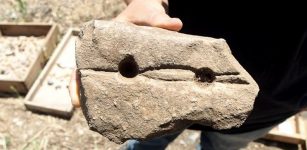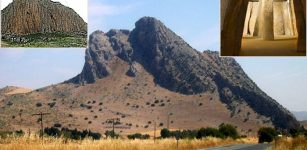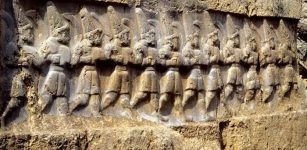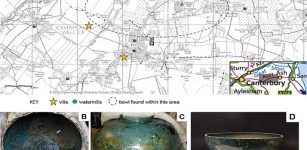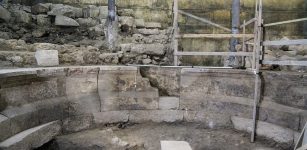1,200-Year-Old Human Skeleton With A Jade Ring Unearthed In El Tigre Archaeological Zone
Jan Bartek - Ancient Pages.com - Jade was held sacred by many ancient civilizations. The green stone has been found in many ancient tombs and placed there as a valuable burial item. In the religious beliefs of Mesoamerican people, jade was symbolically associated with life and death and therefore possessed high spiritual importance.
Archeologists from INAH ( National Institute of Anthropology and History) are currently carrying out excavations in the El Tigre Archaeological Zone, in Campeche, Mexico, where they unearthed an ancient human skeleton buried with a jade ring.
The young individual died about 1,200 years ago, and a jade ring was placed next to him. Credit: INAH
Anthropological analysis shows that human remains belong to a young individual buried around the Late Classic period (600-800 AD). Scientists estimate the skeleton is about 1,200 years old.
According to Diego Prieto Hernández, the general director of the INAH, the skeleton was discovered as part of a funerary offering, which was located inside platform 1E, to the west of the monumental complex known as Structure 1 of the El Tigre Archaeological Zone.
The ritual deposit consisted of two large-format vessels covered with ceramic bowls as lids. One of them particularly drew the attention of archaeologists because it contained the skeletal remains of a young individual, placed in a flexed position and accompanied by a showy and well-preserved jade ring as a distinctive element.
Credit: INAH
Based on the characteristics of the vessels, the deposit can be associated with the Late Classic period (AD 600-800), coinciding with the population and political heyday of El Tigre.
Prieto Hernández indicated that the investigation would continue in the laboratory, where a micro-excavation will be carried out in order to specify anthropological data and find out if it had other associated elements, such as seeds or smaller-format ornaments.
With this skeleton, noted the head of the INAH, there are 177 pre-Hispanic human burials located in Section 1 of the Mayan Train, through two aspects: during the monitoring of archaeological rescues in the laying of the railways, and the application of the Promise in the three mentioned areas.
See also: More Archaeology News
As of August 14, 2023, he said, 2,698 pieces of real estate have also been preserved; 248 furniture elements; 281,353 ceramic fragments, and 55 natural features associated with the presence of ancient human groups in this branch of the train, which runs from Palenque, in Chiapas, to Escárcega, in Campeche.
Written by Jan Bartek - AncientPages.com Staff Writer



